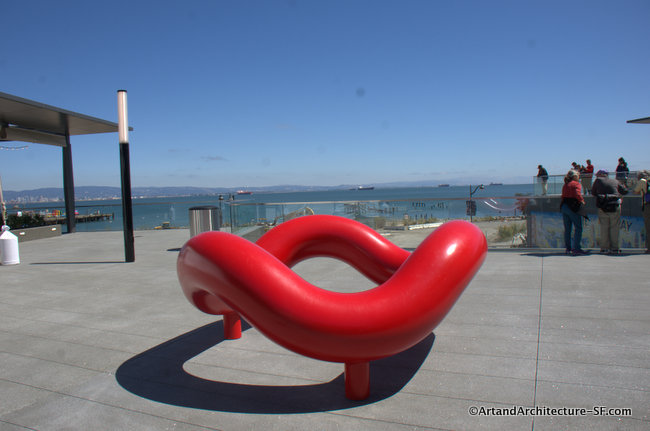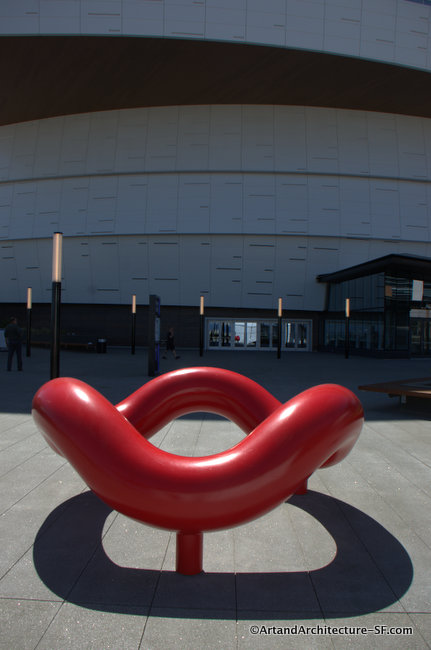Chase Center
Plaza
Waterside
Dogpatch

Isamu Noguchi, Play Sculpture, c. 1975, fabricated 2017; San Francisco Museum of Modern Art, Accessions Committee Fund purchase
Play Sculpture by Isamu Noguchi is on loan from SFMOMA to the Chase Center. This author has an issue with the loaning of art from a public museum to a corporate entity, and for that reason, I would like to directly reprint an article from ArtsJournal.com
“Chase Center was responsible for [SFMOMA’s] logistical expenses” for this program, according to the museum.
In response to my query, SFMOMA’s spokesperson told me that it had entered into this partnership with a sports venue in order to “inspire and encourage new audiences to connect with contemporary art, visit the museum and experience our larger program.” But another way of looking at this is that the museum is depriving its core audience of on-site access to two key works, for the benefit of a commercial enterprise.
Part of this could be money-driven: Whiting of the Chronicle was told that there was “no rental fee for the pieces borrowed from SFMOMA.” But in response to my query about compensation, the museum’s spokesperson revealed to me that SFMOMA would receive an “honorarium [that] will support exhibition and education programs at the museum.” Its spokesperson didn’t answer my emailed question about the amount of that compensation.”
The second piece, referenced in the article, is a mobile by Calder that once hung in the museum’s atrium, and now hangs in the sports arena lobby.
The article goes on to say “For me, the bottom line is that nonprofit art museums shouldn’t be lending their works to for-profit enterprises—not to commercial art galleries and certainly not to sports arenas. It will be interesting to see how this breaching of boundaries sits with other museum professionals, audiences and donors. Another of my questions that SFMOMA didn’t answer was whether the Fisher heirs and the Noguchi estate had been consulted about these unorthodox arrangements.” Something this writer agrees with completely.

Isamu Noguchi (November 17, 1904 – December 30, 1988) was a Japanese American artist and landscape architect whose artistic career spanned six decades, from the 1920s onward. Known for his sculpture and public works, Noguchi also designed stage sets for various Martha Graham productions, and several mass-produced lamps and furniture pieces, some of which are still manufactured and sold.
After high school, Noguchi went to Connecticut to work as an apprentice to Gutzon Borglum, best known as the creator of Mount Rushmore National Memorial. At summer’s end, Borglum told Noguchi that he would never become a sculptor.
In 1924, while still enrolled at Columbia, Noguchi followed his mother’s advice to take night classes at the Leonardo da Vinci Art School. Three months later, Noguchi held his first exhibit, a selection of plaster and terracotta works. He soon dropped out of Columbia University to pursue sculpture full-time.
Isamu Noguchi died on December 30, 1988, at the age of 84. In his obituary, The New York Times called him “a versatile and prolific sculptor whose earthy stones and meditative gardens bridging East and West have become landmarks of 20th-century art”